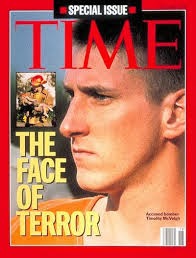Is racism hardwired into our brains?
 |
| Source: minglecity.com |
I grew up in the sixties, a time great turmoil, attending all white-schools, living in an all white neighborhood, attending an all white church, with friends that all were white. It was comfortable. One thing that was stressed to us by family and friends was to avoid the minority sections of town ~ it wasn't safe there.
 |
| Suggested reading Click on image |
In college, there were as many minorities, and as I grew to know them as people, I made friends again, learning along the way that these were people just like me, with the same drives, goals and problems.
When I entered the work force, the same happened again. I have to admit that there were and still are times I felt uncomfortable and nervous, but as I learned and grew as a person I came to realize that folks is just folks, for the most part.
Yet, there are times now where I find myself thinking what can only be described as racist thoughts, reacting badly to skin color or to a person's religion or dress that indicates religion. It's a struggle - with myself - to cope with these feelings. Even after fifty years, I have these reactions. Of course, they embarrass me even though (I hope) no one else knows.
It turns out, at least according to this research, we all, regardless of race, religion, age or sex have this built-in response. That doesn't justify my feelings, but it does help to know that I'm not alone in my struggle.
Our brains may be hardwired this way.
Here's the story:
As much as social equality is advocated in the United States, a new study suggests that besides evaluating their own race and religion most favorably, people share implicit hierarchies for racial, religious, and age groups that may be different from their conscious, explicit attitudes and values.
"People from relatively low-status groups can readily report that their group does not have the most power. At the same time, most groups, even if they have less social power, favor their own group above all others," explains psychological scientist Jordan R. Axt of the University of Virginia, lead author of the study. "We wanted to investigate how these dual influences -- the knowledge that one's group may not have the most power, but nevertheless favoring that group the most -- would reveal themselves on measures of both explicit and implicit attitudes."
Axt and colleagues analyzed data from hundreds of thousands of American participants who completed online Brief Implicit Association Tests (BIAT) on race, religion, and age.
In the first task, participants viewed a male or female face of a particular racial group as well as positive words such as love, pleasant, great, and wonderful, and negative words such as hate, unpleasant, awful, and terrible. For each set, participants categorized the positive and negative words with faces belonging to each racial group.
The idea behind the BIAT is that people are quicker to categorize things with the same response when they are associated more closely in memory, even if they consciously reject that association. If a person has positive associations with a particular racial group, for example, it should take less time to categorize faces from that group together with positive words. A person with negative associations, on the other hand, would need more time to categorize faces from that group together with positive words. Thus, the BIAT can uncover biases people may not be conscious of and do not endorse.
Axt and colleagues found that participants were most likely to prefer members of their own race. Additionally, members of almost every racial group exhibited an implicit racial hierarchy of positive evaluations: White, then Asian, then Black, then Hispanic.
Likewise, people favored their own religion. After their own group, participants' implicit hierarchies usually placed Christianity next, followed by Judaism, Hinduism or Buddhism (there were two versions of the test, with either Hinduism or Buddhism as an option), and Islam.
Unlike race and religion, however, people did not show a preference for members of their own age group. Still, every age group demonstrated an implicit age-based hierarchy with children at the top, followed by young adults, middle-aged adults, and, finally, older adults.
Importantly, participants' implicit associations differed from evaluations they made when asked to report what they consciously thought of various racial, religious, and age groups.
The researchers offer an explanation for the results:
"Our explicit, conscious attitudes may be derived more from personal beliefs about others. At the same time, implicit attitudes may arise both from our own identities as well as from widely spread cultural beliefs or values," says Axt. "While we may disagree with such cultural beliefs, these results illustrate how they can nevertheless shape our minds."
According to Axt and colleagues, the findings contribute to the debate over whether people prefer their own groups, or if those on a lower social rung actually esteem high-status groups as a justification for the way things are:
* * * * *
Story Source: Materials provided by Association for Psychological Science. J. R. Axt, C. R. Ebersole, B. A. Nosek. The Rules of Implicit Evaluation by Race, Religion, and Age. Psychological Science, 2014

Comments
Post a Comment